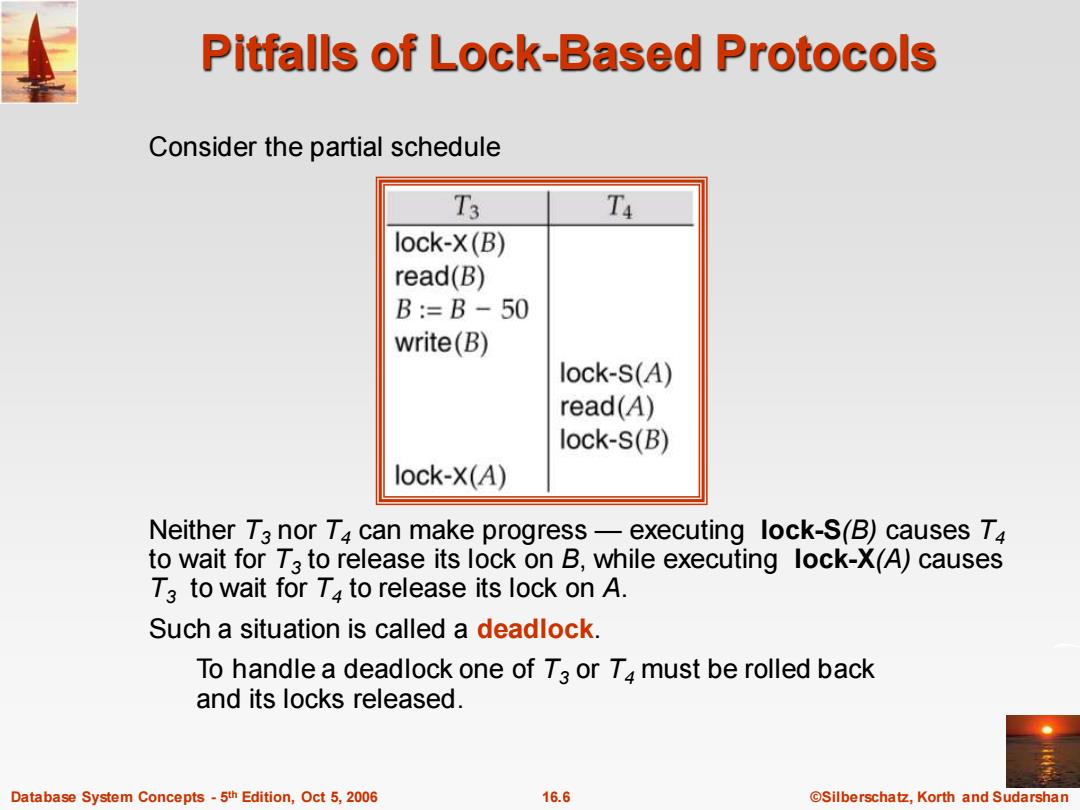正在加载图片...

Pitfalls of Lock-Based Protocols Consider the partial schedule T3 Ta lock-X(B) read(B) B:=B-50 write(B) lock-S(A) read(A) lock-S(B) lock-X(A) Neither T3 nor T4 can make progress-executing lock-S(B)causes T4 to wait for T3 to release its lock on B,while executing lock-X(A)causes T3 to wait for T4 to release its lock on A. Such a situation is called a deadlock. To handle a deadlock one of Ta or T4 must be rolled back and its locks released. Database System Concepts-5th Edition,Oct 5,2006 16.6 ©Silberschat乜,Korth and SudarshanDatabase System Concepts - 5 16.6 ©Silberschatz, Korth and Sudarshan th Edition, Oct 5, 2006 Pitfalls of Lock-Based Protocols Consider the partial schedule Neither T3 nor T4 can make progress — executing lock-S(B) causes T4 to wait for T3 to release its lock on B, while executing lock-X(A) causes T3 to wait for T4 to release its lock on A. Such a situation is called a deadlock. To handle a deadlock one of T3 or T4 must be rolled back and its locks released